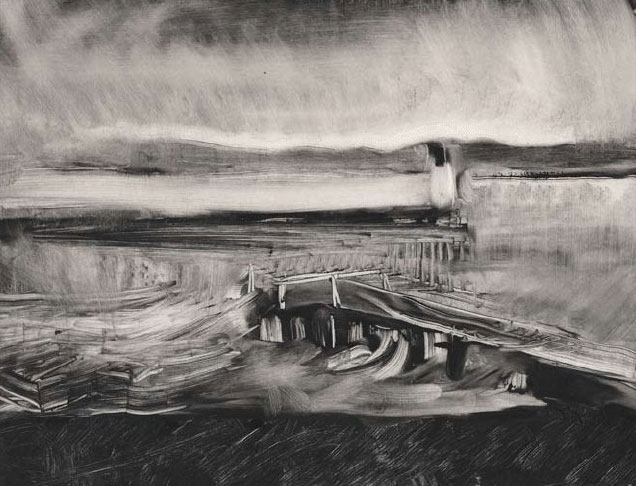- Relief printing
- Intaglio and planographic printing
- Color printing
- Bits and pieces
- Early photography in silver
- Non-silver processes
- Modern photography
- Color notes
- Color photography
- Photography in ink: relief and intaglio printing
- Photography in ink: planographic printing
- Digital processes
- Where do we go from here?
Stone lithography

Stone lithograph. Artist unknown. Propositions de la Russie. c. 1885. 9 7/16 x 10 7/8" (24 x 27.6 cm). The Museum of Modern Art, New York. Gift of Richard Benson. The third great class of printing is planographic, which uses a flat surface. Unlike intaglio and relief printing, the printing surface is not incised; instead, imagery is drawn on it then transferred to the paper. The best-known early form of planographic printing is stone lithography, which exploits the incompatibility of oily ink and water on the surface of a limestone block. Because of its ease of use, it was widely employed for inexpensive newspaper cartoons, which the artist typically drew him or herself on the stone that produced the printed edition.

Monotype. Christopher Benson. View of Narragansett Bay. 1987. 9 x 11 3/4" (22.9 x 29.9 cm). The Museum of Modern Art, New York. Gift of Richard Benson © Christopher Benson.
Relief and intaglio printing are both old processes, gradually developed hundreds of years ago, with no identifiable moment of invention. Not so with lithography, which was invented in 1799, by Alois Senefelder, who developed it as a cheaper alternative to other printing methods. The industrial revolution was rooted in the eighteenth century, built on a foundation of scientific and technical work that created the fields of modern engineering, physics, and chemistry.
We think of the nineteenth century as a time of iron beams and steam engines, but all that heavy gear grew out of the fledgling understanding of chemistry in the century before. Lithography could only have happened in this context, since it used chemistry, rather than the older chisels and burins, to define printing surfaces.

